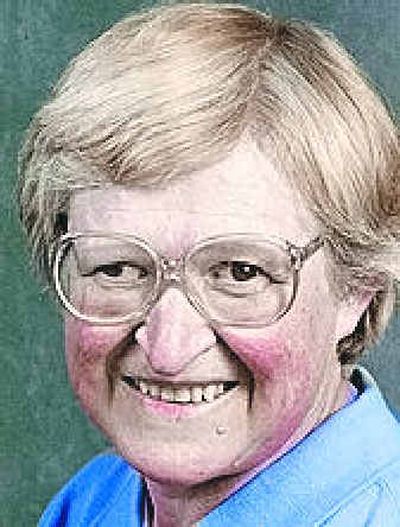By design, a healthier landscape leads to a healthier neighboorhood

When Dr. Bob Scarfo walks into the Rocket Bakery on Spokane’s South Hill for a cup of coffee, he usually finds an eclectic group of people of all ages, each with an interesting background and story to share. Among regulars conversations range from the weather to what’s happening in the neighborhood and beyond. When they finish, they head off to nearby homes, apartments or maybe to work at nearby businesses.
The same thing happens over in the area around Huckleberry’s Market and Jones Pharmacy, he says. People from the surrounding neighborhood and wider community walk or drive to the little shopping area to look over Huckleberry’s unique offerings, go to the post office or pick up a prescription. Again the regulars stop and visit with each other and the store’s staff.
To Scarfo, a landscape architect and associate professor at Washington State University’s Interdisciplinary Design Institute in Spokane, this is the way a neighborhood should be; this is the way the communities of the future should be designed here in Spokane and beyond.
On Tuesday Scarfo will share this vision during a one-day workshop titled “Health and the Environment.” He wants to draw together community, health care, gerontology and urban design professionals and activists who work with older adults and design the places they live to begin finding ways to create communities that support productive and successful aging.
This is the first in a series of workshops that will be held around the country in the next few months.
“Certain physical environments support multi and intergenerational lifestyles, other environments don’t. Our hypothesis is that mixed use, higher density uses will support it. We will find more people fitting the definition of successful aging in those kinds of environments,” says Scarfo.
He knows first hand the value of having communities where people of all background and ages can interact, live, work and play. He has seen it give meaning to the lives of older people who have entered the “Third Age” – that of retirement – adding another 15 to 30 year period of successful and productive activity.
Scarfo says that by 2030, there will be an estimated 77 million Americans over the age of 65. The group actually needing the support of medical and care services may make up only eight percent of this number. Yet it is this is the group a lot of planning has been focused on.
What about planning communities and opportunity-friendly infrastructure for the remaining 92 percent or 71 million healthy, active but retired people who are able and want to age successfully and productively? What is the cost of not planning for them?
Successful aging is defined as the ability of older adults to avoid disease and disability, maintain cognitive and physical function and continue a sustained engagement of life. Productive aging can be defined several ways but in essence it is maintaining the desire and ability to produce goods and services that enhance the quality of life for the individual and the community. This includes the value of services given by volunteer work and the sharing of their work place experience with younger workers.
When Scarfo approached several leading gerontology researchers about his observations, they agreed with him. There hasn’t been much work focused on developing communities that support successful, productive aging.
The trends that support Scarfo’s theories are there. The Baby Boomers are going to do retirement their way. They are just as likely to hop on their Harleys to head south for the winter as drive the land yacht to Mexico. They are going back to school, teaching or volunteering for the fun of it. Some of them are even going to go back to their old professions, starting new ones or starting their own business. They aren’t retiring, they are only changing gears.
“We have about a five- to eight-year window to plan before large numbers of the Boomer generation start reaching 65,” says Scarfo. Those five to eight years can make the difference in being ready for the unprecedented numbers of Boomers who begin retiring at the end of the period.
As Scarfo talked further with professionals from the health, geriatrics and design fields, he found them paralleling each other in their goals – they just weren’t talking to each other.
He tested his theory by bringing together several groups of nursing, gerontology and design students for workshops at the Interdisciplinary Design Institute and at other universities. The first encounters were awkward with each group wondering why they were doing this. He broke the students into mixed groups and gave them a framework to begin talking with each other. After a while he asked if they wanted to move into different groups. “They said no. This is fun. We are enjoying it,” he says.
The workshop is intended to give professionals and community activists from the fields of gerontology, geriatrics, and health care, landscape architecture, urban design and urban and rural planning the opportunity to find common ground and begin looking at the common issues that will help create positive and sustainable social and physical communities.
Will it work in Spokane? Scarfo thinks so. He bases this on his South Hill experiences and other projects like the initial proposals for the design of the proposed University District in Spokane that will create a mixed-use, integrated living and working community around the education community of WSU, EWU and Gonzaga.
“I am very excited for Spokane and Spokane Valley. They have a tremendous opportunity. They have been talking the right talk for the right time ahead of the wave,” says Scarfo. “There is tremendous potential.”